Ask Ethan #103: Have We Solved The Black Hole Information Paradox?
Or is this an example of the media hype surrounding Hawking going nuts?
“Thus it seems Einstein was doubly wrong when he said, God does not play dice. Not only does God definitely play dice, but He sometimes confuses us by throwing them where they can’t be seen.” –Stephen Hawking
Every week, when you send in your questions and suggestions for Ask Ethan, I look through and give priority to our top Patreon supporters, particularly if they’re asking a high-quality question. There’s been no bigger topic for discussion this week than the announcement from Stephen Hawking claiming to solve the Black Hole information paradox, although the paper is not yet available. Has he? Our reader (and supporter) Denier wants to know:
How is Hawking’s theory of black holes storing information on the shell of an event horizon different than what Susskind said decades ago about black holes storing information on the shell of an event horizon? Did Hawking just pull a Steve Jobs and proclaim something new that Android figured out years before? Or is this actually new stuff?
Black holes are interesting objects, so let’s go to the beginning and talk about what this paradox is.
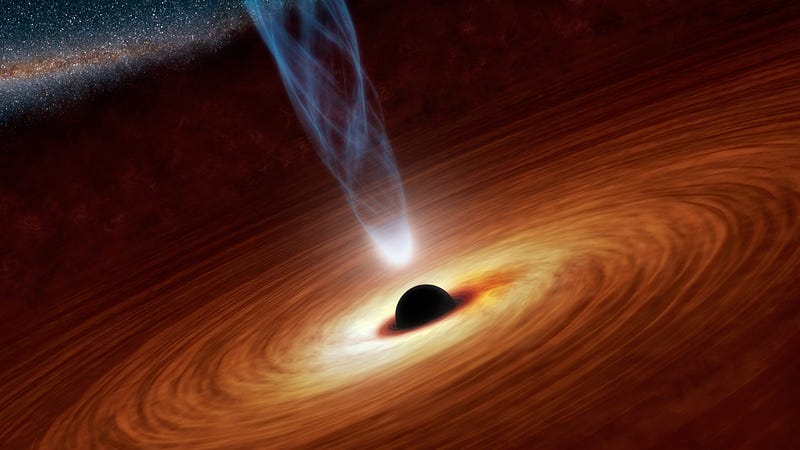
On the one hand, black holes are — in theory — pretty easy to make. All you need to do is get enough mass (or its energy equivalent, via E = mc^2) in a small enough region of space, and you’ll get one! Typically, a massive star whose core implodes, where it can no longer hold itself up against gravitational collapse, is the best way to get there. If you start with a star roughly 20 times the mass of the Sun (or more), when it ends its life in a type II supernova explosion, a black hole will be the result.
Over time, black holes can either eat more matter or merge together with other objects (or other black holes) to grow larger. Some galaxies like ours have black holes of millions of solar masses, while the largest can reach billions or even tens of billions of solar masses in size.
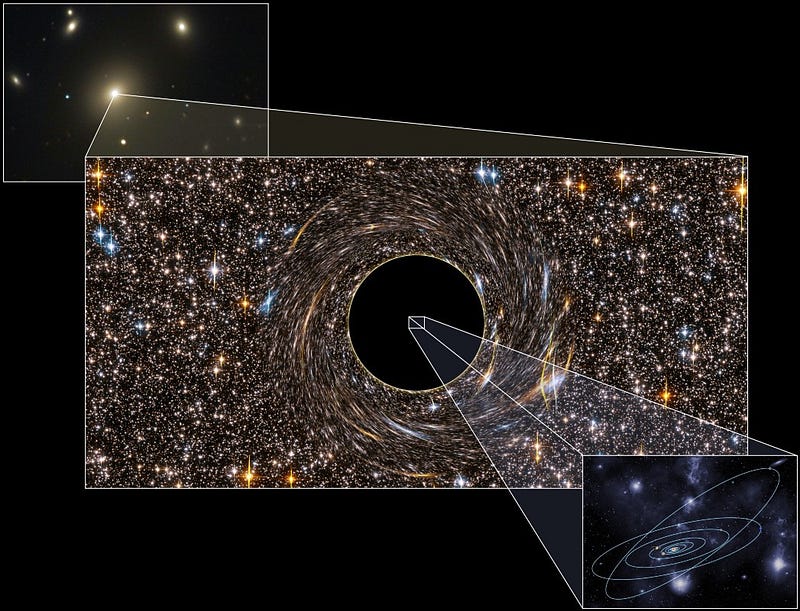
But from outside the black hole, we have no way of knowing how it came to be. As far as we can tell, there are only a few properties of a black hole that we can discern at all:
- the black hole’s mass,
- its electric charge,
- and its angular momentum (or spin).
That’s it!
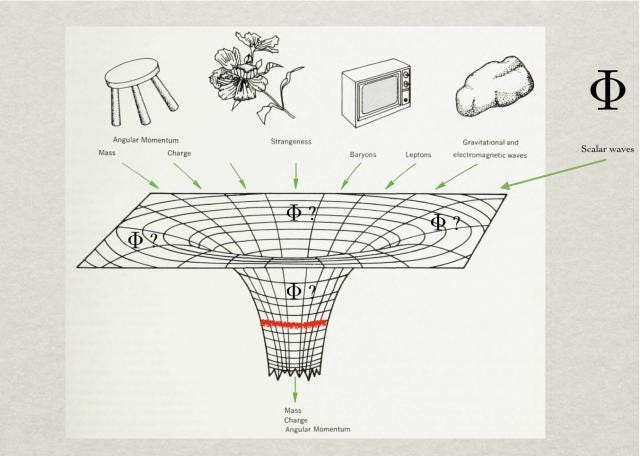
This should, perhaps, trouble you. If you made a black hole exclusively out of neutrons, that should carry some different information than a black hole that was made exclusively out of anti-neutrons, or one that was made out of an even mix of electrons and positrons. After all, “baryon number” is an important piece of information in the quantum world, and if a black hole has a baryon number of 10^58 versus one that has a baryon number of zero versus one with a baryon number of -10^58, that information should somehow be preserved.
Indeed, there’s a chance that information is preserved, at least to start. Imagine you have a black hole initially, and something falls into it. Maybe it’s a proton, an antiproton, a photon, two photons, etc. Maybe it’s even a person!
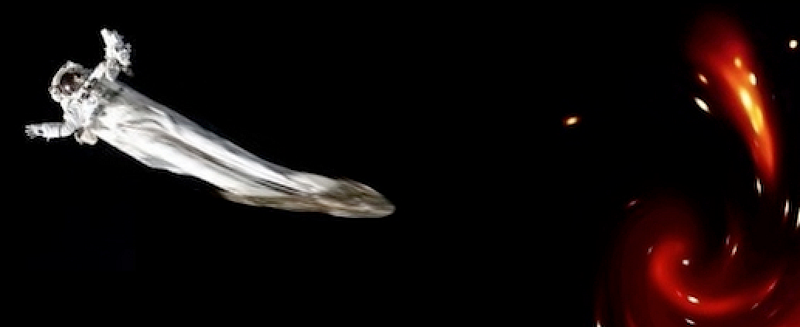
When that “thing” falls in, it will add to the mass of the black hole, but that information also gets encoded on the surface of the black hole’s event horizon. While the observer (particle, photon(s), or person) falling in won’t even notice as they cross the event horizon, someone outside will see them redshift by greater and greater amounts, becoming fainter and dimmer and redder, but never truly crossing the event horizon. Instead, their information remains encoded on the black hole’s surface, where it presumably exists for all eternity.
So if black holes lasted forever, there would be no information paradox at all: something falls in, and that information as to what it was is still encoded on that black hole’s surface.
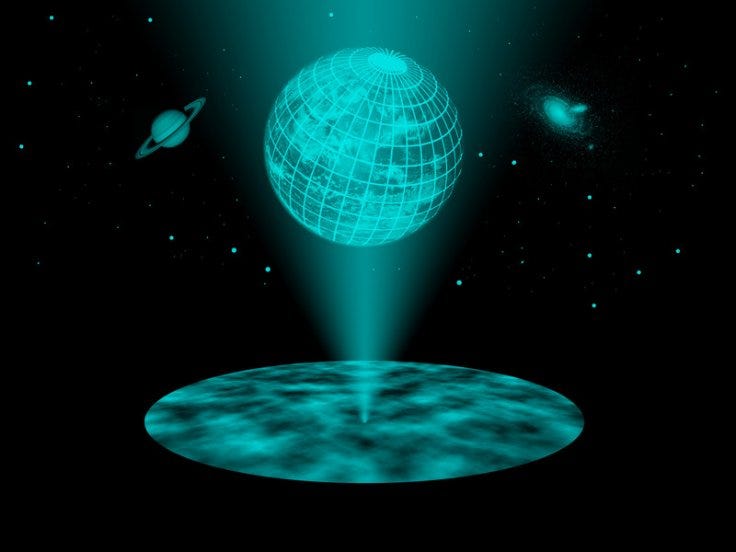
But then we look to the quantum world, which is where the problem came from in the first place. You see, black holes are tremendous sources of gravity, with all that mass packed into such a small volume of space. As a result, the space around black holes is curved quite severely, and the quantum Universe behaves differently in curved space as compared to flat space.
In particular, one of the things that normally happens in flat space is that there’s a non-zero vacuum energy: particle-antiparticle pairs pop in-and-out of existence all the time. Under normal conditions, they exist for a brief moment, re-annihilate, and disappear back into the vacuum. If you look at the “before” state and the “after” state, there’s nothing different. But in curved space, you can have those particle-antiparticle pairs appear on opposite sides of the event horizon. Under just the right conditions — which are rare, but happen — you’ll get a tiny, low-energy quantum of radiation that gets emitted as a result, with the “particle” from one virtual pair annihilating with the “antiparticle” from another, producing a blackbody spectrum of radiation.
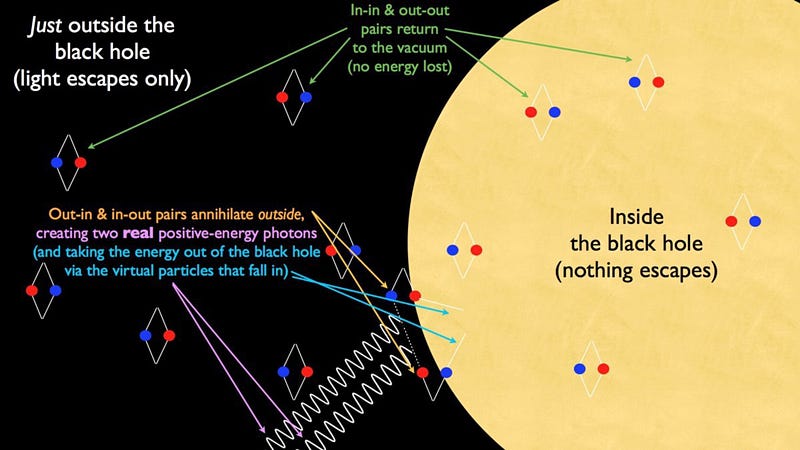
This is a long, slow process: it takes 10^67 years for a solar mass black hole to evaporate and some 10^100 years for a supermassive one to do so, but the Universe is patient, and has all kinds of time. At the end of it, there won’t be any black hole left, only that sea of thermal, blackbody radiation. This radiation — Hawking radiation — is how all black hole will eventually decay.
Worst of all, that radiation has no memory of what went into that black hole. That’s what the black hole information paradox is: you had information that went into the black hole, but that information eventually gets lost over time. Since information shouldn’t be able to be destroyed like that, we have a paradox.
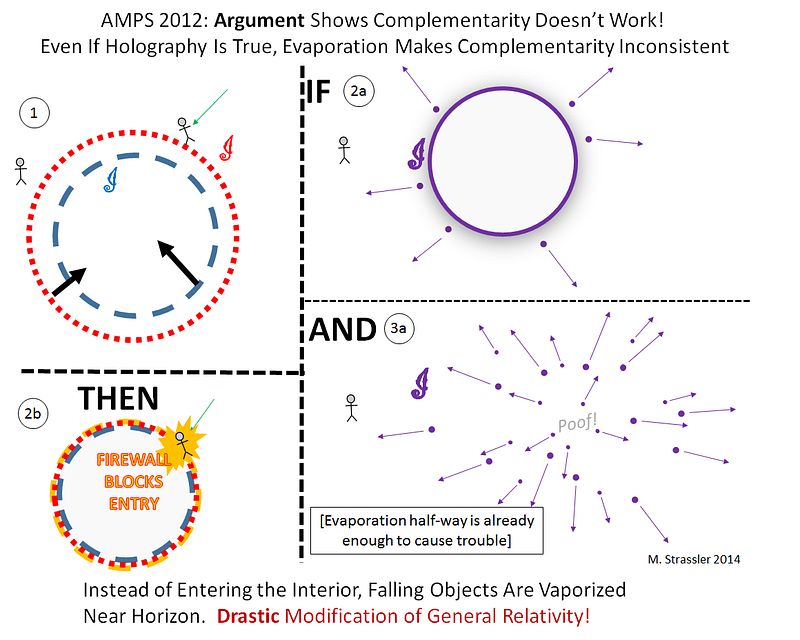
The normal assumption is that somehow, that information must be preserved. Up until now, nobody knew how, although there were ideas. The general assumption is that somehow, that information from the surface of the black hole must somehow get encoded into the outgoing Hawking radiation. Well, Stephen Hawking’s proposal — along with his collaborators Malcom Perry and Andrew Strominger — is that there’s something arising from string theory known as supertranslations, which is one of Strominger’s areas of expertise.
A supertranslation, in the simplest terms possible, takes a well-known fact about the classical vacuum in general relativity: it’s highly degenerate. You have different vacuum states (different vacua) which have the same properties, or which are indistinguishable from one another. Different vacua which correspond to different states can be related to one another by a broken symmetry identified by Bondi, van der Burg and Metzer all the way back in 1962. These broken symmetries are the “supertranslations” that Strominger works on, and they can describe how changes in a gravitational field propagate.
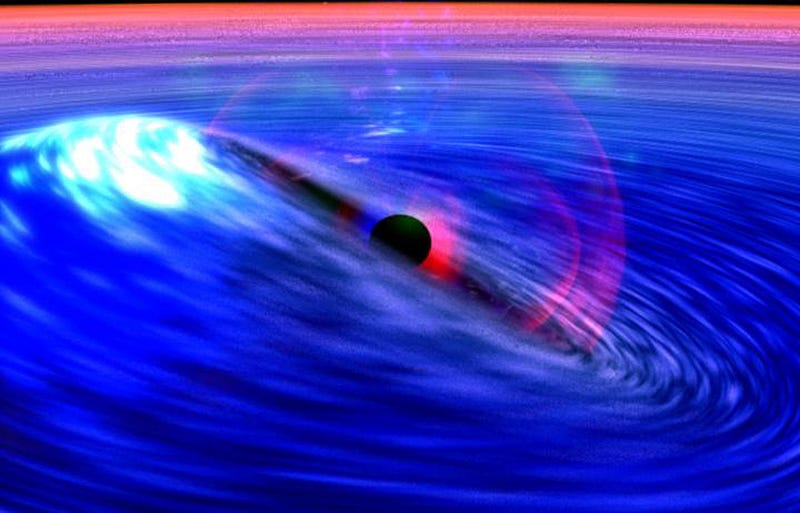
Dr. Rubens C. Reis, via http://dept.astro.lsa.umich.edu/~rdosreis/rreis/Home.html.
In April of this past year, Hawking heard one of Strominger’s talks, and decided this meant that the ingoing particles onto a black hole horizon cause supertranslations, and that those supertranslations can imprint themselves on the outgoing Hawking radiation. And that’s what the forthcoming paper (not yet available) will argue.
That’s the “new development” afoot here.
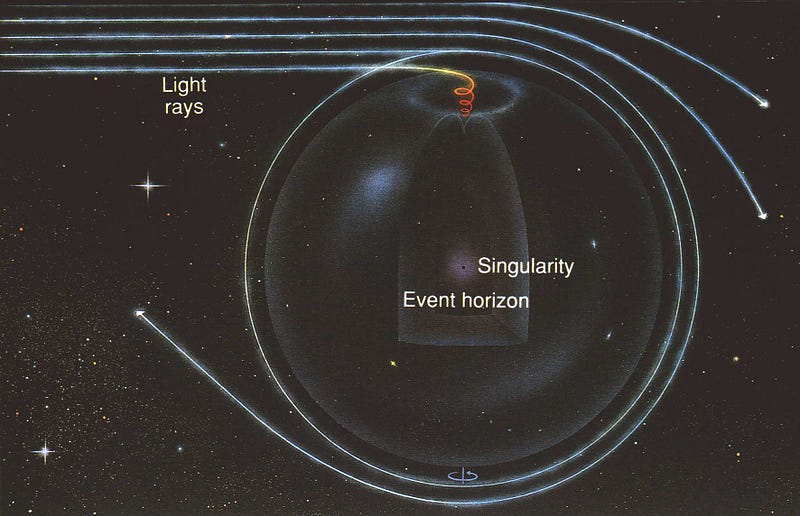
But there’s a long way to go from saying “I have an idea” to “this idea is the solution,” and what we have here is the former and not the latter. For example, some follow-up details have emerged:
- The picture that they have is a purely classical one, and doesn’t encode quantum information like baryon number.
- The picture assumes an infinite number of charges, rather than the correct number for a black hole given by the (true) Bekenstein-Hawking entropy.
- There is no quantized version of these symmetries or supertranslations.
- There is also no quantitative picture for how this information gets imprinted onto the outgoing radiation: it’s just an idea.
In addition, Sabine Hossenfelder, who works on the problems of quantized gravity in curved spaces, expressed the following concern:
I am somewhat concerned actually that once one looks at the quantum picture, the BMS charges at infinity will be entangled with charges falling into the black hole, thus essentially reinventing the black hole information problem.
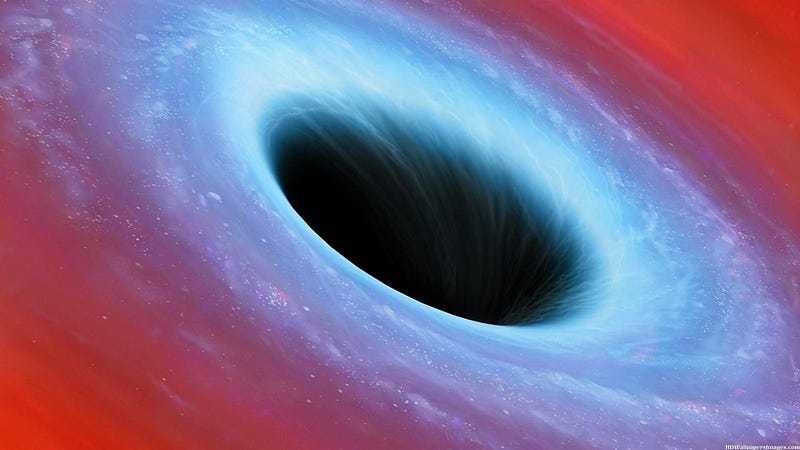
So yes, Denier, Hawking did actually come up with a novel twist on the black hole information paradox. But is this the solution to the paradox? Hardly. Which is to say, in no way, shape or form should one conclude that the paradox is now resolved. What one should conclude is that a new idea has been proposed as to how to resolve the paradox, and that idea is in its infancy right now.
In my opinion, if anyone who wasn’t named Stephen Hawking had proposed this idea, it would be garnering only a small amount of attention, as the idea itself is not fleshed out enough to be anything more than a spark, or a germ of a possibility. Yes, it’s worth investigating further, but do be aware that most ideas like this turn out to be dead ends. It’s possible that this will turn out to be something special, but until someone actually does the theoretical work all the way through — and Hawking, Perry and Strominger have not — we have no reason to believe this paradox is going away anytime soon.
Have a question or suggestion for Ask Ethan? Submit it here for our consideration.
Leave your comments at our forum, and support Starts With A Bang on Patreon!





